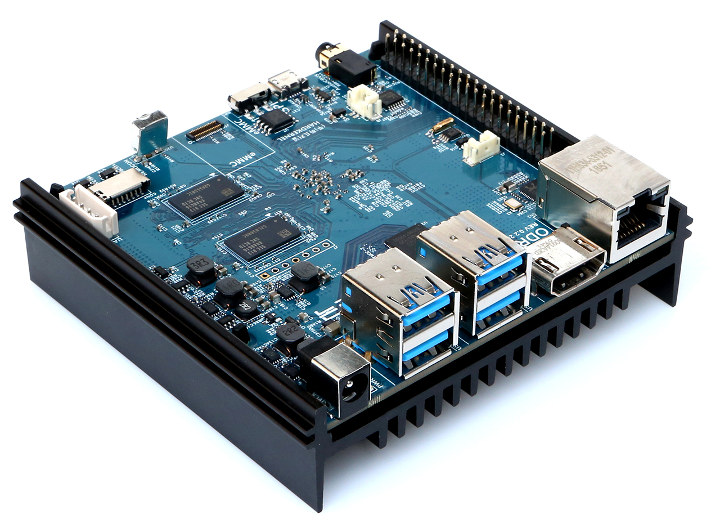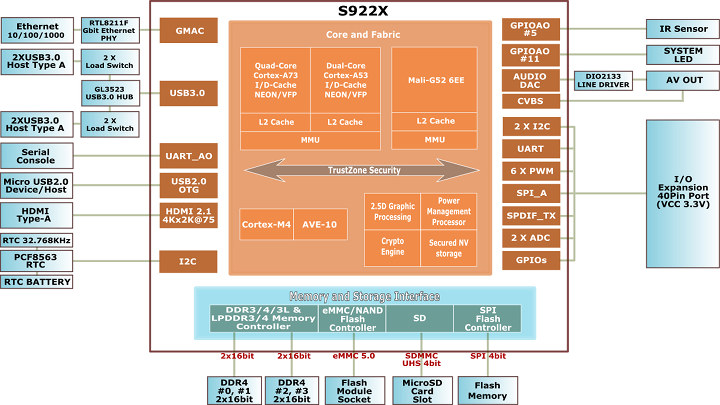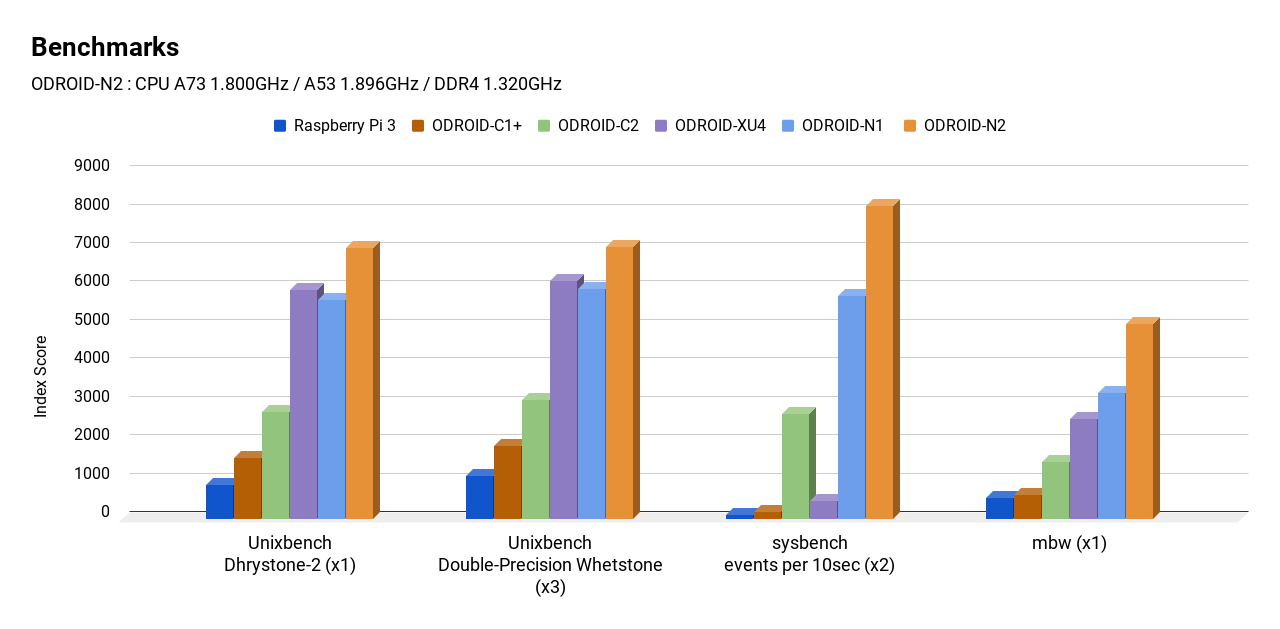Due to RAM supply issues, Hardkernel canceled RK3399 based ODROID-N1 board last year, and decided to replace it with ODROID-N2 using a “newer SoC .. with faster CPU/GPU cores and native DDR4 support”, but they did not provide any details about the processor, and we speculated it could be the upcoming Amlogic S922X processor.
Hardkernel has now formally unveiled ODROID-N2, the first Amlogic S922X SBC to be announced, with 2 to 4GB DDR4 RAM, 4x USB 3.0 ports, Gigabit Ethernet, HDMI 2.0a video output up to 4K 60p and more.

ODROID-N2 SBC specifications:
- SoC – Amlogic S922X hexa-core big.LITTLE processor with 4x Arm Cortex A73 cores @ up to 1.8 GHz, 2x Arm Cortex A53 cores @ 1.9 GHz, Arm Mali-G52 GPU @ 846MHz; 12nm manufacturing process
- System Memory – 2GB or 4GB DDR4 RAM @ 1320 MHz
- Storage – 8MB SPI flash, eMMC flash module socket, micro SD card slot
- Video & Audio Output – HDMI up to 4K @ 75 Hz, AV port (composite video + stereo audio)
- USB – 4x USB 3.0 ports, 1x micro USB 2.0 OTG port
- Expansions – 40-pin GPIO header with 2x I2C, UART, 6x PWM, SPI, S/PDIF, 2x ADC, and GPIOs
- Misc – 2x system LEDs, SPI/eMMC boot select switch, IR receiver, 2-pin header for RTC battery, 2-pin header for optional fan
- Debugging – 1x UART header for serial console
- Power Supply – DC power barrel jack
- Power consumption – Idle: 1.6~1.8 Watt; Heavy load: 5.2~5.3 Watt (stress-ng –cpu 6 –cpu-method matrixprod)
- Dimensions – 90 x 90 mm (TBC)

The processor is placed on the bottom of the board, and a large heatsink covering the complete bottom side of the SBC ensures proper cooling.
The company will provide Ubuntu 18.04 LTS image with Linux kernel 4.9, as well as Android 9.0 Pie image and BSP for the board. Hardware accelerated video decoding is working in Ubuntu including 4K/UHD H.265 60fps, but Mali G52 GPU Linux driver only works on the framebuffer, as Arm has no plan to support X11 on Bitfrost GPU. A Linux Wayland driver will be released in a few months. The Wiki is already up, but still work in progress at this time.
We had already seen some Amlogic S922X CPU benchmarks (Geekbench), but Hardkernel ran more benchmarks involving GPU, USB, and storage, and performance is quite better than the one of ODROID-N1 with multi-core performance around 20% faster, the DDR4 RAM 35% faster, the Mali-G52MP6 around 10% faster, around 340MB/s USB 3.0 throughput, over 900 Mbps Gigabit Ethernet Tx and Rx, and more.

The full details of the benchmarks can be found in the announcement linked in the introduction of this article. They also tested the board under load (with stress-ng) in a chamber set to 35°C, and the CPU temperature never exceeded 74°C.
The ODROID-N2 SBC will sell for $63 with 2GB RAM and $79 with 4GB RAM. I can already see some of you throwing bank notes at the screen shouting “just take my money”, but you have to calm down because the board will only start shipping in April, and Hardkernel plans to start selling ODROID-N2 at the end of March.
Thanks to T and Johannes for the tip.

Jean-Luc started CNX Software in 2010 as a part-time endeavor, before quitting his job as a software engineering manager, and starting to write daily news, and reviews full time later in 2011.
Support CNX Software! Donate via cryptocurrencies, become a Patron on Patreon, or purchase goods on Amazon or Aliexpress




